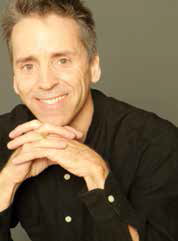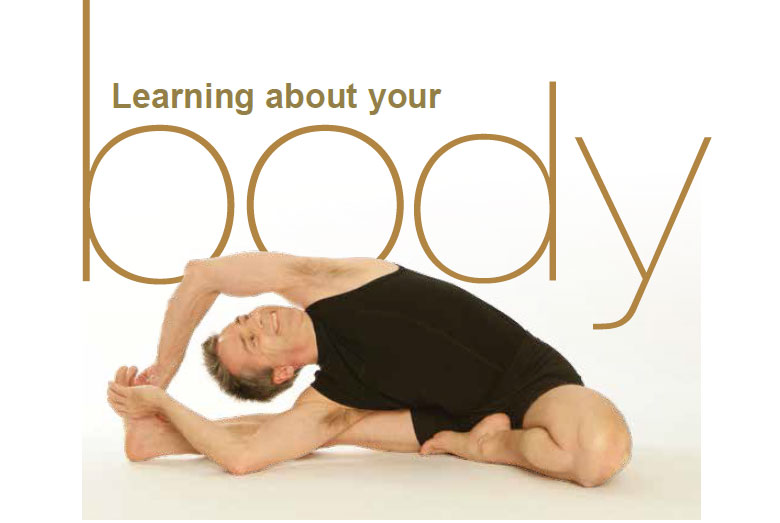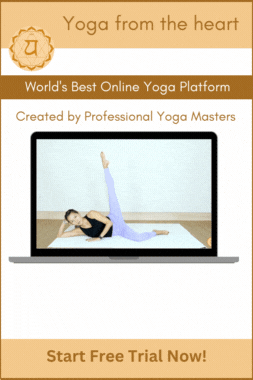The Practice
 Asana: How did you discover yoga? What transpired you to pursue a career in yoga?
Asana: How did you discover yoga? What transpired you to pursue a career in yoga?
Martin: I was at Arizona State University getting my master’s degree in biomedical engineering. I looked at the new schedule of classes and noticed a class called Yoga 101. I had always been athletic but I had never tried yoga. I felt like giving it a try. In my very first class, I was amazed to feel my body so connected to my breath with a spiritual message.
I loved it and I was hooked. I took yoga classes every remaining semester in school then found public classes when I graduated. I was still working as an electrical engineer but took 2 or 3 classes each week and used literally all of my vacation days to travel and study yoga. I became a teacher then met my wife who also taught yoga.
We bounced the dream around for a while about making yoga the family business, then finally decided to go for it. Literally one week after I turned in my notice for my corporate engineering job, we were offered the position of teacher training directors of the largest yoga studios in the southwest US. That first year set us on a very solid foundation and allowed me to continue on my yoga career.
Asana: What drove you to specialise in anatomy and therapeutics?
Martin: I’ve always had an interest in the body. That was part of what led me to get my master’s degree in biomedical engineering after many years as an electrical engineer. When my wife and I were offering teacher trainings, she commented that we needed someone to teach anatomy. I immediately jumpers for sale volunteered and was very excited to teach anatomy for yoga.
However, my first classes I taught were not very effective. They were actually pretty boring. After teaching anatomy a few times and some brutally honest feedback from my wife, I started getting much better at making anatomy engaging and fun. Today I have a blast teaching it.
Asana: Do you consider your practice change since focusing on anatomy and therapeutics? Does such knowledge make you more cautious in your practice?
Martin: Rather than more cautious, I would say my knowledge of anatomy and therapeutics makes me more conscious. Knowing how


to move and what is happening in my body makes my practice safer and more effective even if I am practicing difficult poses. I don’t back off, but I know when not to push and how to protect myself. It is more than protection, however.
My practice is more effective. If I have an ache or pain, I can practise to eliminate the pain – to heal myself.
Asana: Has the recent not so positive scandal in the yoga world either affect your practice or change your focus on your practice style?
Martin: There have been so many recent scandals in the yoga world that they do not surprise me any longer. The nature of yoga invites students in become vulnerable both spiritually and physically. Students choose this vulnerability in the presence of their teacher so that they can evolve and grow.
This is not a problem if the teacher upholds a high ethical standard regarding their students. Unfortunately, there are teachers who take advantage of a student’s vulnerability. The worst of those are quite adept at spotting and using vulnerable students and some of them have caused great pain and turmoil in their communities.
The scandal in 2012 by the founder of my then yoga system sent much of the community reeling (including myself) for a year or more. My personal practice slowed a great deal while I was re-assessing my entire relationship to yoga. I am no longer associated with any particular system though I retain and teach many very useful alignment skills that I learned. Today, I enjoy the freedom of embracing many new ideas that I have learned by applying the fundamentals of anatomy and therapy in my own body and in my students. And I am willing to look at what every yoga system and teacher has to offer. Even a scandal can have its own silver lining.
The Transformation
Asana: What has been the biggest transformation for you – in your practice or to a larger extent, your life?
Martin: Actually, it came from the scandal I discussed in the last question. That was one of my biggest teachers in both yoga and life.
Asana: Do you consider that yoga can change people’s personality and behaviour? How so?
Martin: I think we are who we are regardless of yoga. However, I feel that yoga can help a person become more at ease in their own bodymind so that they can unleash their capacity to be a better version of themselves. In that way, it changes the way we approach the world and others most definitely see the difference in our behaviour.
My friends in the world of electrical engineering were constantly amazed by the ease with which I navigated difficult situations at work after I started practising yoga.
Asana: Do you believe that yoga therapy could transform anyone, both in the practice and general wellbeing?
Martin: Yes. Starting with practice, in order to heal what is hurting, the student must first address what they are doing that is contributing to the injury. Until they do that, any yoga therapy is just a surface bandage. You have to go to the source to heal. That will fundamentally transform your practice because you cannot go back to your old ways. In terms of general wellbeing, the answer is also yes.
Whatever you are doing on the mat, you are doing off the mat in your life. A good motto could be “Heal your yoga, heal your life”. But it goes deeper than that. Every physical injury also corresponds to injury on other levels such as emotional and spiritual. We live on all levels simultaneously. So if you help someone heal physically, you are also helping them heal the nonphysical parts of themselves. And that can change their life.
Asana: You accumulate a wealth of therapeutic experience. Could someone pick this up and feel the difference in short term, or is this a lifelong practice?
Martin: I remember being amazed in my early yoga days at how many yoga teachers would take a weekend workshop on alignment and go home and start teaching it. Most seasoned teachers now understand that even when you finish a 200-hour Yoga Alliance teacher training, you are really just qualified to start learning. Becoming masterful at yoga therapy is no different. However… When a student is taught the fundamentals of good yoga therapy in an effective setting, they can start getting good results with helping others quite soon.
For instance, I taught a 5-day, 33-hour yoga anatomy and therapy intensive in Chicago the second week in January. Just two weeks later one of my students sent this message: “One of my private students comes to me for therapeutics. He has a number of issues – C5- T5 are fused, knee replacement, and shoulder that pulls forward. It was SO rewarding to see his body respond to the shoulder therapeutics you taught us! He mechanical bull for sale was elated when he left. Usually, he comes every other week. He’s coming back next week instead!!!” This is common. If you learn the fundamentals well, you can start making good progress right away. Expect mastery to take a while.
The Teaching
Asana: Do you notice any differences in your students’ practice in the west and east?
Martin: I see differences all around the world so it’s hard to generalise. I do notice and appreciate the high level of dedication and commitment I have seen when I have taught in the Asia Yoga Conference and other venues in the east.
Regarding students’ practices, I just read about a scientific study that showed evidence of more mobility in the hip joints of those of eastern versus western descent. Over the years, I have personally noticed more openness in students’ hips when I travel to the east. The study may lend some scientific backing to that notion.
Asana: Is alignment the most critical aspect in your teaching, hence the practice you wish to promote?
Martin: I would say understanding one’s body is my top criterion. That leads to alignment because the student has a WHY for what they do rather than just an instruction to do it.
Asana: We note that you created various webinars in your teaching. How effective is this in interacting with your students?
Martin: Webinars are fantastic. First, I’m a technology geek and I love learning how to present and teach more effectively online. The mix of high-quality 3D graphics, interactive movement software and live on-cameral demonstrations really brings the learning alive. Students report that their learning by webinar is highly effective and many students I have never met in person tell me they finally understand anatomy and yoga therapy after my webinars. I manage the direct interaction with students in a couple of ways.
My webinars are done first in a live setting. I reserve one third of my webinar time for question and answers and students can ask questions of me directly thought a chat window as I teach. For students who take the webinars later in the recorded format, I maintain a Facebook discussion page where they can ask their questions and I will answer. Those discussions are great because other students contribute their own knowledge and the discussion goes deep. Find out more about my webinars at www.kirkyoga.com.
Asana: You frequent various yoga conferences. How useful do you consider these events are, from a teacher’s and a student’s perspective? What do you propose to teach the students in June 2014 at the Asia Yoga Conference?
Martin: I l o v e t h e conferences because they are such a great forum for introduction for both students and teachers. I meet more students who come back for more training after studying with me in a conferences than any other way. Students get the opportunity to see which subjects and which teachers really inspire them in just a few days. As teachers, some of us are known to slip into other teacher’s sessions as well and we get the chance to learn from each other. The conferences are very full days but they are so rich for everyone. This year in Asia, I will be bringing a mix of yoga anatomy, yoga therapeutics and some great asana practices including mastering arm balances.
My all day session on the Biomechanics of Healing will take students all the way from the fundamental principles of what makes yoga therapy work to the foundations of how they can start to implement those principles into their teaching now. And I’m very excited to share my newest focus in anatomy teaching: How your muscles shift their purpose throughout your practice.
For instance, the hip rotators have completely different functions in Tadasana than toboggan gonflable they do in hip openers such as Pigeon Prep. If you understand how their function changes, it can revolutionise your ability to open your hips. This will be the best year yet for anatomy and therapy at the Asia Yoga Conference. I hope to see you there. The Lifestyle
Asana: Do you encourage your wife and son to practise yoga? If so, which aspect(s) do they enjoy?
Martin: My wife was practising yoga years before I ever started. She is well grounded. My son loves to join us on the mat for sun salutations and other asanas. He is quite creative and I just let him have fun and play with it. At age 5, he needs to find his own loves. He gets to decide if that will be yoga.
Asana: What is your typical day as a teacher?
Martin: It is never the same. Since I do not teach locally (only when touring), much of my local time is spent running the business of Kirk Yoga and doing online private sessions with Skype. I make time throughout my week to get on my yoga mat or to get into the gym. And I am usually working on own yoga therapy (how else would I understand this stuff so well?).
Now my days are even less typical as a father who shares in the responsibilities of taking my son to school or picking him up from after-school events. But few weeks are the same as I am often planning and packing for my next travel event or practising for an upcoming webinar.
Asana: What is your favourite pastime when you are not teaching or travelling?
Martin: I love to hike or bike and read scientific journals. I also listen to a weekly science radio program to keep up with the latest developments in the world of physics and science.
And I’m a total space geek, following the latest launches and especially the Mars missions. I guess you cannot take the scientist/ engineer out of me, even when I’m immersed in the world of yoga.
Asana: What is the most therapeutic thing you do?
Martin: Self care. It is my most challenging task to take care of myself with good food, enough sleep and ample down time. The world of a traveling yoga teacher does not lend itself to good self care. I have to make that happen on my own. The Way Forward
Asana: Are you planning on any new books? You mentioned about authoring a book on yoga anatomy. How is this coming along?
Martin: I am currently writing a proposal for a new book on yoga therapy. A major publishing house has expressed great interest in the project and even proposed a schedule that would have the book in print by 2015. I hope to have an announcement about that book by the time I teach at AYC in June.
While the writing has been finished for several years, my work on the yoga anatomy book had to be put on hold. It was to be published by Anusara yoga and the legal fallout of the 2012 scandal stopped all projects. I still hope to recover the rights and continue with that book when possible.
Asana: Is there any project on your priority list currently? What is the biggest thing you wish to achieve in life?
Martin: My top project now is the yoga therapy book I mentioned above. The greatest achievements I desire are these.
• To share my life’s passion with as many on the planet who want to know.
• To follow what I consider to be the highest spiritual path in life – an ever deepening and fulfilling marriage.
• To successfully raise my son and give him the tools to live a happy life and fulfill his greatest dreams.















 It is a delightful experience talking to Martin. He is not a “typical” yoga master perhaps because of his engineering background. Those who have been to Martin’s training or workshop would have noticed his precision, clarity, yet playfulness. He makes a seemingly boring subject of anatomy an interesting one. As he puts it, once we appreciate why for what we do, we can practise with more compassion. If you happen to be in Hong Kong in June, do join Martin’s workshops.
It is a delightful experience talking to Martin. He is not a “typical” yoga master perhaps because of his engineering background. Those who have been to Martin’s training or workshop would have noticed his precision, clarity, yet playfulness. He makes a seemingly boring subject of anatomy an interesting one. As he puts it, once we appreciate why for what we do, we can practise with more compassion. If you happen to be in Hong Kong in June, do join Martin’s workshops.


 Other
Other 

